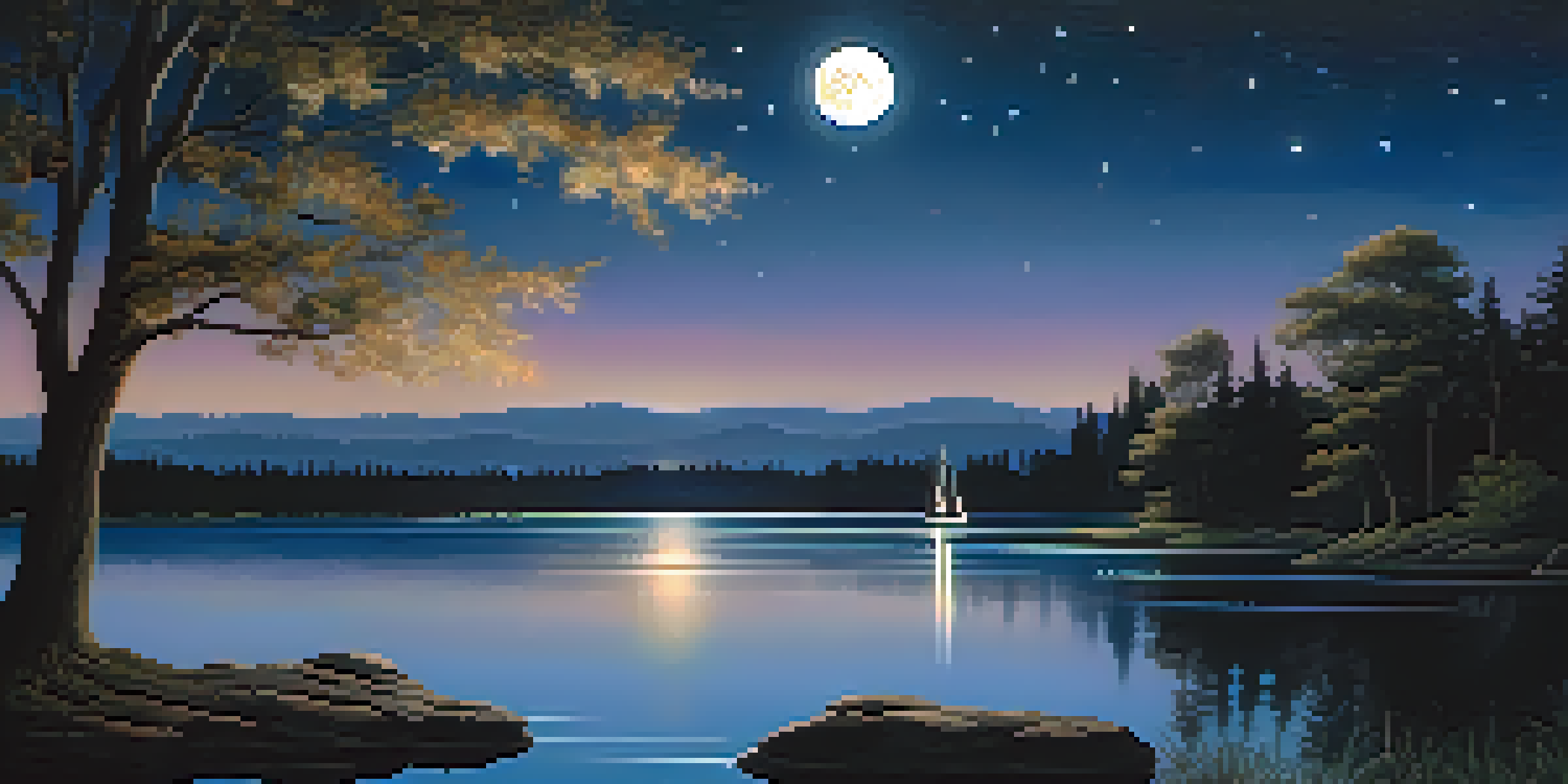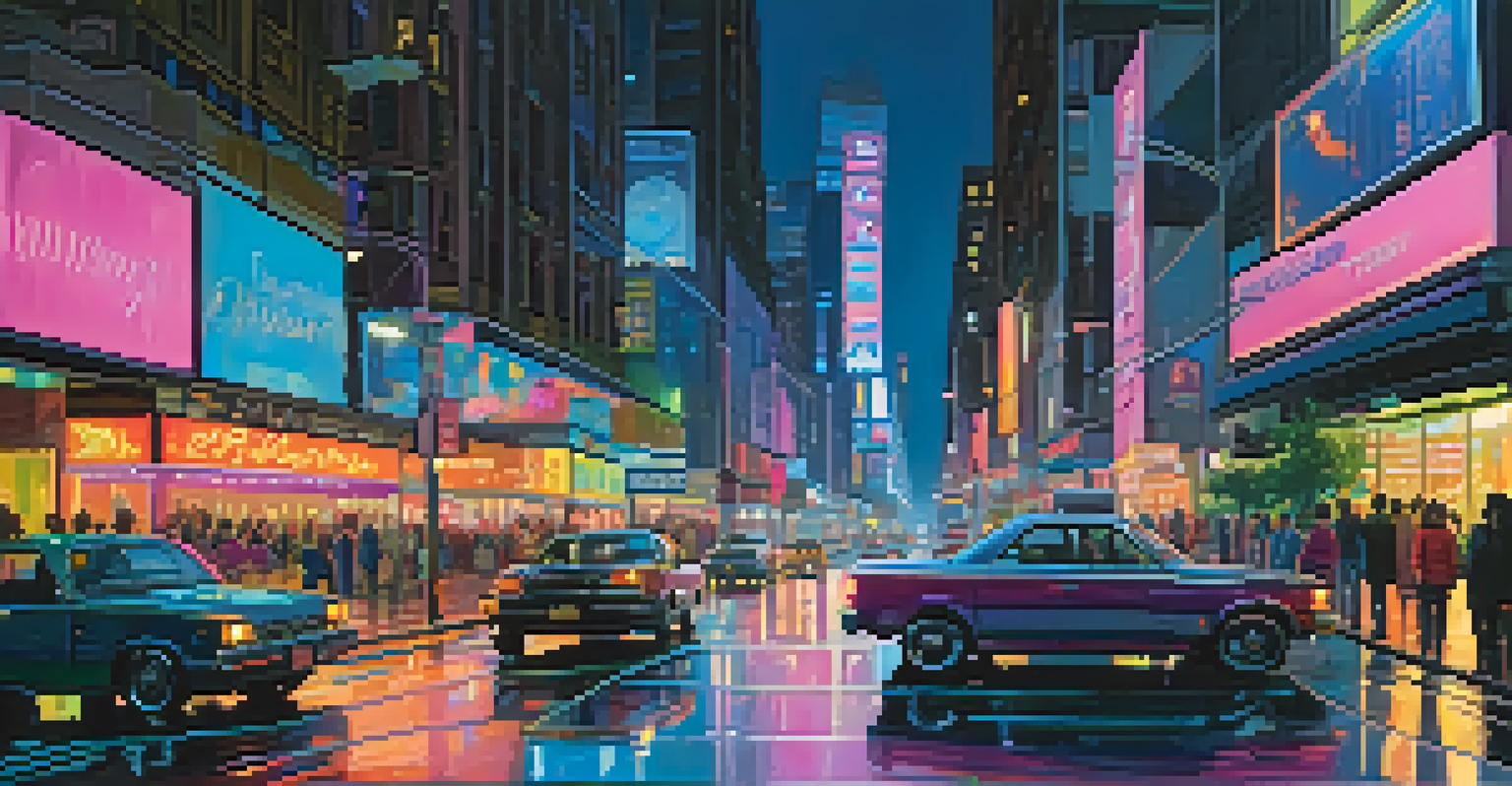Night Photography Tips for Stunning Travel Images

Understand Your Camera Settings for Night Shots
Before you dive into night photography, familiarize yourself with your camera's settings. Understanding ISO, aperture, and shutter speed is crucial. For instance, a higher ISO can help capture more light, but be mindful of noise that can affect image quality.
Photography is the story I fail to put into words.
Experimenting with a wide aperture allows more light to enter, making it easier to shoot in low-light conditions. A slower shutter speed can create beautiful light trails, especially if you're capturing moving subjects like cars. It’s all about finding the right balance that suits your creative vision.
Don’t hesitate to use manual mode. This setting gives you full control over your exposure and helps you achieve stunning results. Practice makes perfect, so take some test shots and adjust your settings accordingly to see what works best for you.
Use a Tripod for Stability and Clarity
When photographing at night, camera stability is essential to avoid blurry images. A sturdy tripod not only keeps your camera steady but also allows you to use slower shutter speeds without sacrificing clarity. This is particularly important when capturing landscapes or cityscapes.

If you don’t have a tripod, look for stable surfaces like walls or benches to rest your camera. Some photographers even use their backpacks as makeshift stabilizers. Just remember, the goal is to keep your camera as still as possible during exposure.
Master Camera Settings for Night Shots
Understanding ISO, aperture, and shutter speed is essential for capturing stunning images in low light.
Additionally, consider using a remote shutter release or the camera's timer function. This minimizes any vibrations caused by pressing the shutter button and ensures your images are sharp and clear.
Explore Different Composition Techniques
Good composition can elevate your night photography from ordinary to extraordinary. The rule of thirds is a classic technique where you divide your image into a grid and place your subject along those lines or intersections. This creates a more balanced and engaging photograph.
The best camera is the one you have with you.
Leading lines can also be powerful in night shots. Streets, rivers, or pathways can guide the viewer's eye into the frame, adding depth and dimension. Experiment with different angles and perspectives to find what highlights your subject best.
Don’t forget to include interesting foreground elements. These can add context and depth to your nighttime scenes, making your travel images even more captivating. Think of how a silhouetted tree or an illuminated sign can enhance your composition.
Utilize Natural and Artificial Light Sources
Night photography is all about light, so harnessing both natural and artificial light sources is key. Streetlights, neon signs, and even the moon can create stunning effects in your images. Pay attention to how different light sources can affect the mood of your photograph.
For instance, capturing a city skyline illuminated by streetlights can evoke a vibrant urban atmosphere. On the other hand, a quiet beach under moonlight can convey a sense of tranquility. Be mindful of the light around you and experiment with different sources.
Stability is Key with a Tripod
Using a tripod helps maintain stability, allowing for clearer images even with slower shutter speeds.
Also, consider using long exposure techniques to create light trails. This can be particularly effective for capturing moving vehicles or people, adding a dynamic element to your travel images. Just ensure you have a solid tripod to keep everything steady!
Planning Your Night Shoots in Advance
To capture the best night photographs, planning is essential. Research your destination to find the best locations for night shooting, such as iconic landmarks or scenic viewpoints. Knowing when and where to shoot can make all the difference in your final images.
Timing is also crucial; consider shooting during the blue hour, the period just after sunset or before sunrise. The sky's deep blue hue can create a magical backdrop for your photos, enhancing the overall aesthetics of your travel images.
Use apps or websites to track sunset and sunrise times, as well as moon phases. This way, you can align your shooting schedule with the best lighting conditions and make the most out of your nighttime adventures.
Experiment with Post-Processing Techniques
Post-processing is where the magic happens! After your night shoot, use editing software to enhance your images. Adjusting brightness, contrast, and saturation can help bring out the details that might have been lost in low light.
Don’t be afraid to experiment with filters and effects to create a unique look for your photos. For instance, adding a slight vignette can draw attention to the center of your image, while sharpening can enhance the clarity of your subject.
Plan and Prepare for Night Shoots
Researching locations and timing your shoots can significantly enhance the quality of your nighttime photography.
Remember, it's all about finding your style. Spend time editing your photos and discover what techniques resonate with you. With practice, you'll develop a knack for making your night images truly pop.
Stay Safe While Shooting at Night
Safety should always be a priority when shooting at night, especially if you're in an unfamiliar location. Stick to well-lit areas and avoid venturing into isolated spots where you may feel uncomfortable. Bring a friend along if possible; it can be more enjoyable and safer.
Keep your gear secure and be mindful of your surroundings. A sturdy camera bag can help protect your equipment and make it easier to carry. Always be aware of your belongings, as night photography often attracts attention.

Lastly, trust your instincts. If a location feels off or unsafe, don’t hesitate to move to a different area. Your safety is more important than capturing that perfect shot.